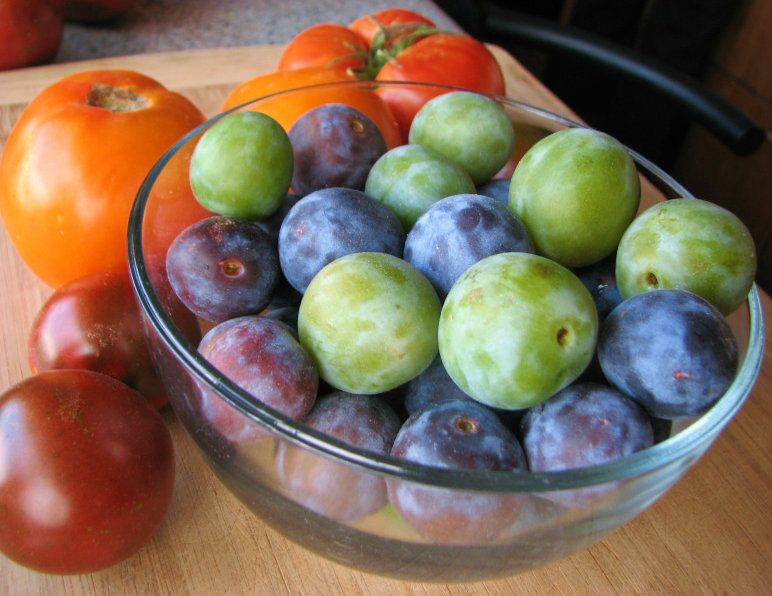I remember reading about it years ago, in Eat Here, Reclaiming Homegrown Pleasures in a Global Supermarket. Among hundreds of interesting insights into our food system, Brian Halweil revealed this tidbit: Britain’s National Collection features of 2000 varieties of apples! What’s more, spread among this diversity is an almost continuous harvest, with some varieties ripening as early as April and May and others clear into winter.
Maybe this was such a shock because I was raised in the Red Delicious generation. In fact, Red Delicious were so ubiquitous they became synonymous with apples. We know that variety was sacrificed on the altar of industrial convenience. What we don’t know is all the tastes, colors and textures we’ve been deprived of.
I got a chance to experience some of what we lost this summer. Early July, a friend from England began frantically emailing our beekeeping group about greengages, and how the bears were breaking down the trees to get them. What in the world is a “greengage,” I wondered. Turns out they are a variety of plum, in a lovely, translucent shade of green (big surprise.)

My British friend explained that a man named Gage discovered the plum in France long ago and brought the green beauty to England, hence the name. They have become an English favorite. Now we had to protect my friend’s precious greengage trees from bears, so one morning before work, a friend and I teetered on ladders (on a sloped driveway!), to rescue plums and tree. I ended up with a huge box, which made no less than 16 pints of sauce!
In the way that seasonal eaters develop a weird pleasure from creating fun things from whatever nature delivers up, those plums have got my wheels turning. They have a very subtle flavor–not at all like their sweet-tart cousins that are common in grocery stores here. My British friend thinks they would pair nicely with lemon and/or ginger. My fellow plum picker and I were thinking along the lines of an orange marmalade. Plenty of fodder for experimentation come winter.